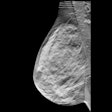Dear AuntMinnie Member,
A new study sheds some light on why skeptics of screening are having such a tough time convincing people to consider screening's flaws more strongly when deciding whether to get an exam.
Researchers asked a group of individuals two survey questions on hypothetical screening scenarios that cast screening in a negative light by questioning its effectiveness or also highlighting its potential for harms. They were surprised to find that despite the warnings, many of the survey respondents still wanted screening.
The authors called this tendency a "bias for action," and it underlies the difficulty that the antiscreening lobby is having in getting people to look more critically at screening tests like mammography, specifically by considering the harms of a screening test in addition to its benefits.
The problem for screening skeptics is the fact that the vast majority of people have a strong preference for avoiding a mortality outcome -- and to avoid that outcome, they have a much higher tolerance for "harms" than biostatisticians do. It's a calculation that no amount of "patient education" will be able to "correct," no matter how hard they try. Read more about the study by clicking here.
While you're in our Women's Imaging Community, check out this story on the accuracy of breast density measurements based on synthesized 2D mammography images (spoiler alert: they compare well to assessments based on regular 2D mammography studies), and be sure to read the latest contribution from Paragon Consulting Partners on how breast imaging facilities may need to change to adapt to the rise of consumerism in women's health.
These articles and more are available in our Women's Imaging Community at women.auntminnie.com.
Stress echo beats CCTA
Meanwhile, a new story in our Ultrasound Community is highlighting the advantages of stress echocardiography instead of coronary CT angiography (CCTA) for evaluating patients with chest pain.
While CCTA is increasingly being used for chest pain evaluation due to its speed and ability to reduce hospital stay, stress echo might be able to perform the same function with the advantage of less radiation dose. Learn what a group from New York City found by clicking here, or go to the Ultrasound Community at ultrasound.auntminnie.com.
Cinematic rendering goes for the gut
Finally, visit our Advanced Visualization Community for the latest update on one of the most exciting areas of 3D imaging: cinematic rendering. Researchers from Johns Hopkins University who have been pioneering the technique describe its application to abdominal imaging; we covered their findings in an article you can read by clicking here or visiting the community at av.auntminnie.com.



















